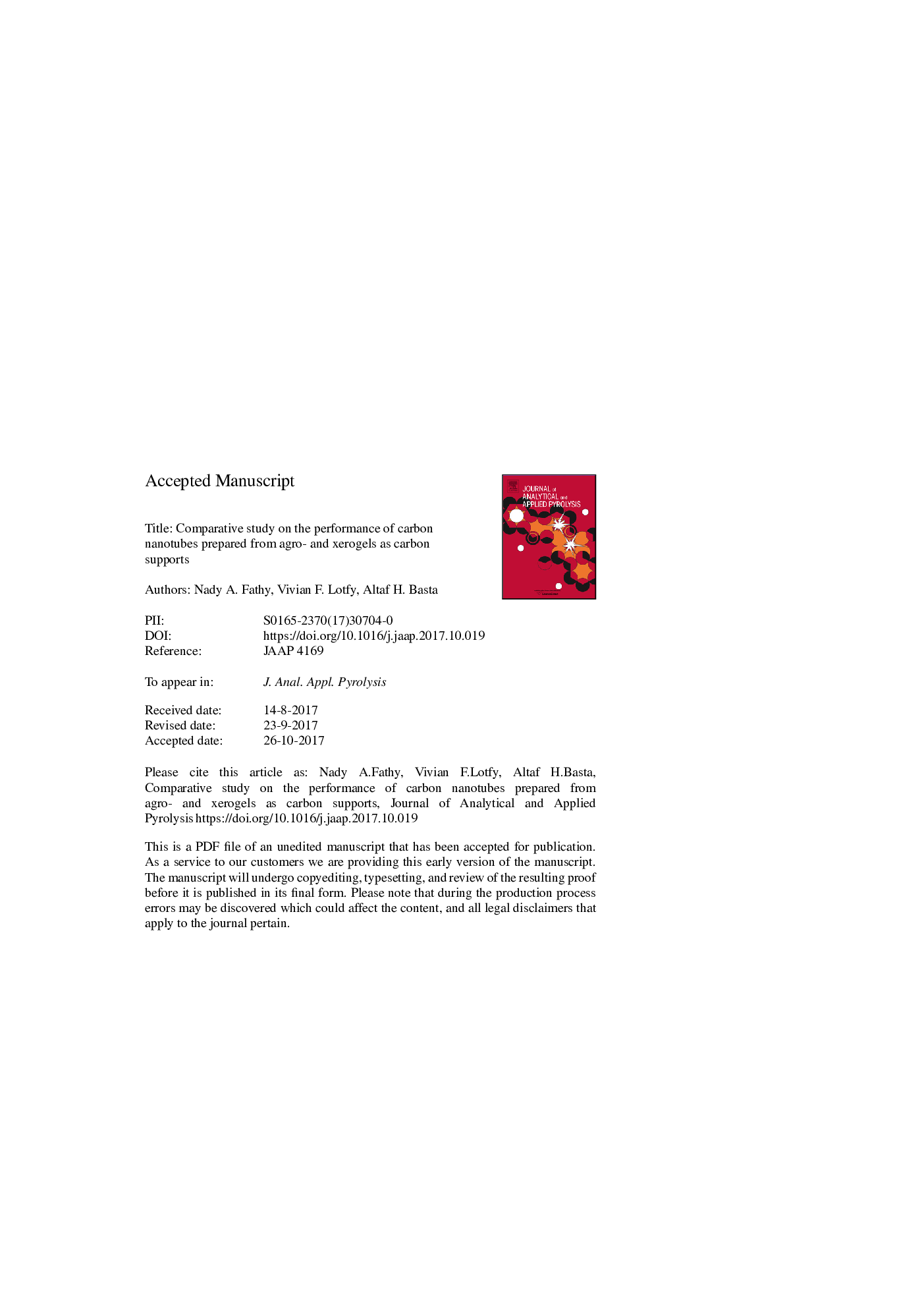| Article ID | Journal | Published Year | Pages | File Type |
|---|---|---|---|---|
| 7606447 | Journal of Analytical and Applied Pyrolysis | 2017 | 22 Pages |
Abstract
The role of natural and synthetic polymers on performance of the prepared carbon nanotubes (CNTs) is compared. In this respect rice straw (RS) and organic xerogels (OXG) are used as carbon supports; while camphor and tri-metal oxides (Fe-Ni-Cu) are performed as carbon precursor and catalyst to produce CNTs. Two chain length aldehydes (formaldehyde and butyraldehyde) are used in preparing OXG from their reaction with resorcinol. The evaluation of CNTs is carried out by SEM, TEM and FT-IR, as well as adsorption performance (e.g., nitrogen gas, iodine value and methylene blue adsorption capacity). The results show that, the xerogels prepared from two aliphatic aldehydes are more efficient as carbon supporting materials of CNTs than RS, where they provide yields of CNTs over the carbonized xerogels varying from 85 to 320% (based on starting weight of support carbon + catalyst); while the yield becomes 20% in case of rice straw (RS) carbon support. Moreover, the produced CNTs from xerogels possess relatively higher surface area (â>100 m2/g) than that obtained from rice straw (8 m2/g). The formaldehyde-resorcinol xerogel and tri-metallic catalysts (Fe-Ni-Cu) are recommended as efficient support and catalyst toward synthesis of CNT possessing high yield, large surface area, reasonable morphology, as well as high adsorption capacity both toward iodine (117 mg/g) and methylene blue (88 mg/g).
Related Topics
Physical Sciences and Engineering
Chemistry
Analytical Chemistry
Authors
Nady A. Fathy, Vivian F. Lotfy, Altaf H. Basta,
